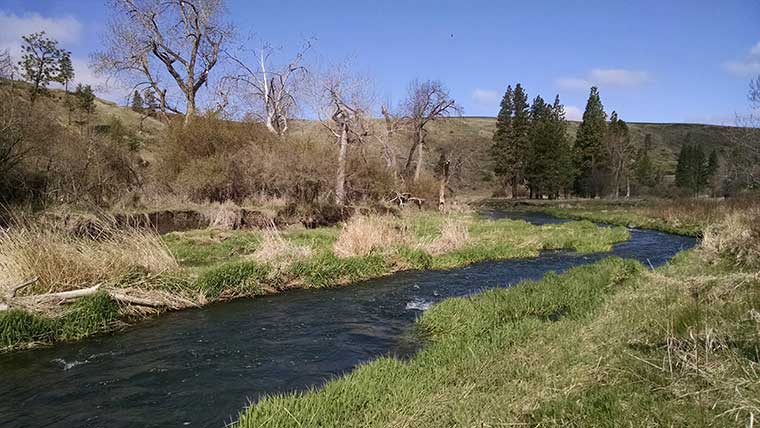When an airport and a creek intersect creating hazards to airfield safety, waterway functions can be replaced elsewhere providing an opportunity for enhancement and uplift to the region. This was the case for the Pullman-Moscow Regional Airport in northeast Washington.
The airport was built in the early 1930s to serve as a training location for the Civilian Pilot Training Program serving colleges in Washington and Idaho. The region is characterized by rolling hills, steep rock and channeled scablands so finding a suitable site for a level airfield was likely a challenge. A creek and a floodplain, somewhat centrally located between the two colleges, created a fairly flat valley that was likely the most suitable site for an airport.
As the airport grew and developed, the creek was channelized and piped as it traversed the airport. This presented challenges to airport operations due to frequent flooding and attracting wildlife that may threaten airfield safety.
Planned airfield safety improvements would further impact the wetlands, stream channel and flood hazard zones. The creek would have to be realigned, and the flood carrying capacity and storage rerouted safely around the airfield. To compensate for impacting approximately 18 acres of wetland and stream impacts, a large-scale off-site mitigation effort was undertaken. The mitigation site needed to be at least two miles away from the airport. It also had to be within the same watershed to maintain airfield safety and offset the functional benefit to the region.
The selected mitigation site created a 113-acre conservation easement area, the largest mitigation area in eastern Washington. The mitigation site improvements:
- Created nine acres of riverine wetlands
- Enhanced 13 acres of existing riverine wetlands
- Preserved 91 acres of adjacent and contiguous upland buffer areas
The mitigation project is unique because it occupies a continuous tract of land, rather than spreading resources between smaller isolated mitigation sites. This concept provides greater habitat diversity and wetland functions. The project results in increased flood storage, filtration of runoff from adjacent lands, and habitat enhancements.
As part of the mitigation site development, agreements were established for the conservation easement area to be maintained by a regional nonprofit land conservation organization, the Palouse Land Trust. Recently, the Palouse Land Trust secured an additional conservation easement on adjacent lands to protect productive agricultural land.
The result is an economic and environmental uplift to the region which was recognized by the American Council of Engineering Companies of Washington awarding Best in State: Gold Award for social, economic and sustainable for the design.



